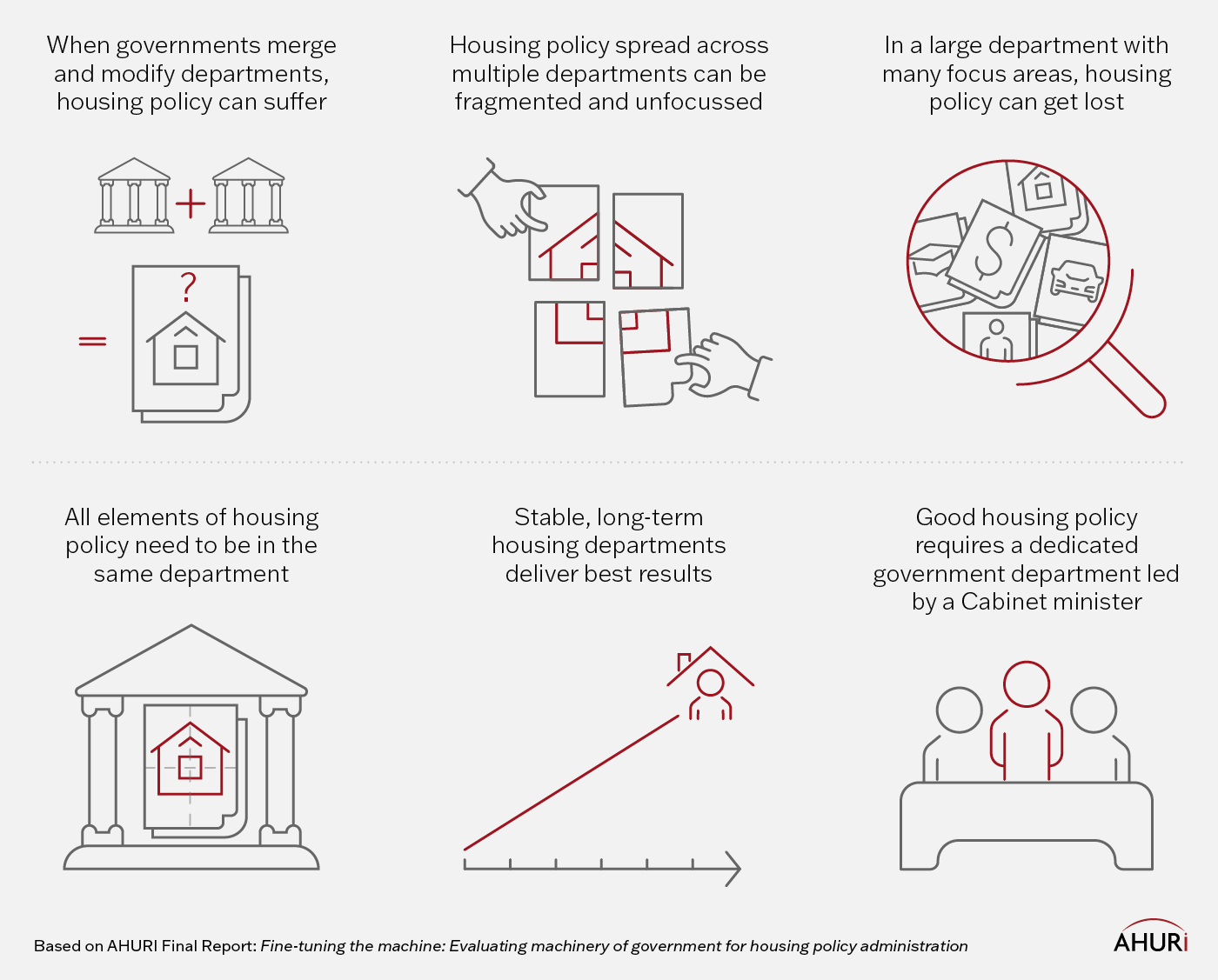What this research is about
This research explores how changes to government administrative structures and processes affect housing policy in Australia. It outlines what can be done to reduce some of the negative impacts of these changes.
Why this research is important
The allocation of responsibility for areas of public policy is often called 'machinery of government'. While some Australian portfolios have remained stable over long periods, housing policy has been governed by various organisational units across the federal and state governments.
Policy makers need to understand the effects of machinery of government changes, particularly in housing where debates about housing policy goals are ongoing.
-
At a glance
-
Key findings
The objectives of housing policy
Housing policy should primarily ensure adequate and secure shelter for all Australians. It should work to reduce inequality rather than increase it. This central objective can focus broader housing policy goals.
Service-based housing interventions (for example, social housing or rent assistance) and ownership interventions (such as tax rebates or grants for homebuyers) need to be viewed as two parts of the same policy objective. In recent decades, home ownership has been emphasised for its investment potential. This has created a political climate where ownership issues get much more attention than service-based housing. This has led to a degraded social housing sector.
Housing policy in Australia is 'fragmented and fractured'
Responsibility for smaller aspects of housing policy is spread across multiple departments and agencies. This has made housing vulnerable to frequent government changes, often causing service disruptions and reduced policy capacity.
Central coordination is needed for policy to effectively address the main housing issues. This can be difficult in today's environment of networked providers partnering across public, private and not-for-profit sectors.
Department restructures can lead to problems
When housing policy sits within larger departments, it often receives less attention and resources as other policy areas take priority. In-house expertise becomes less valued when units are frequently moved or split, as generalist managers are preferred over specialists in these situations.
Restructures can also harm staff morale, leading staff to feel their policy area and work is not valued by senior management.
-
Policy actions
A number of actions will improve housing policy development and implementation:
- a Cabinet-level Department of Housing with a Cabinet-level Minister is the best way to advance public policy objectives. This will ensure housing gets the resources needed to address urgent issues
- a firmer legal framework between the Australian Government and the state and territory governments is needed for a coordinated, long-term national housing strategy. States and territories should implement housing policy and deliver services. Strategies should have long-term goals and be protected from electoral cycle instability
- housing policy should also include a human rights-based approach. This will restore the understanding of housing as a societal goal
- private development should be steered toward delivering products that more closely align with housing policy objectives
- community and not-for-profit housing organisations need better resources to provide more services more securely. More direct public sector intervention is necessary
- evaluating machinery of government changes is essential. A clear understanding of who benefits and who might be disadvantaged by changes is crucial for learning the right lessons from any restructuring.
-
Research design
This research reviewed the history of housing policy administration in Australia; evaluated organisational management and public policy literature; and conducted a focus group with housing policy administration professionals.



